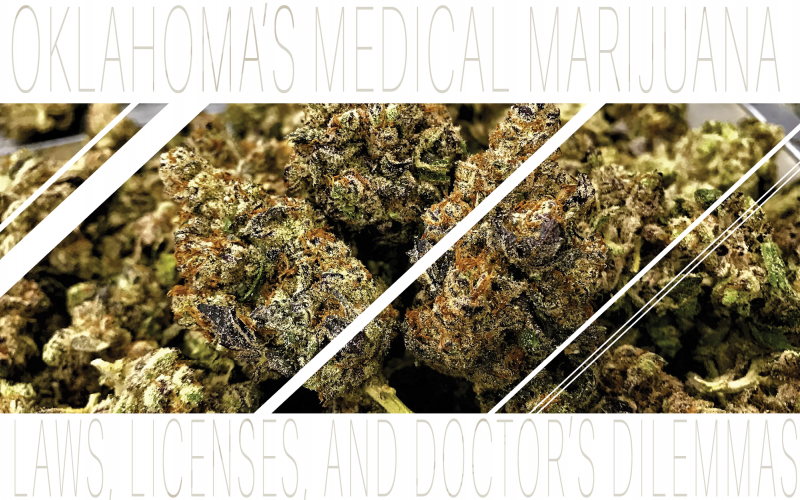Oklahoma’s Medical Marijuana Laws, Licenses, and Doctor’s Dilemmas
By Cindy Lockstone
Oklahomans suffering from a range of medical conditions can now legally own, buy, grow, and consume medical marijuana products when prescribed by a licensed Oklahoma Medical Marijuana Authority (OMMA) medical practitioner.
Sounds easy? It should be, but many doctors in Oklahoma are still reluctant to prescribe medical marijuana for a variety of reasons.
In September 2018, three months after Oklahoma voters passed the use of medical marijuana, a total of 38 statewide physicians were licensed to prescribe medical marijuana, according to an article in the Tulsa World. Today the OMMA, Oklahoma's medical marijuana licensing body, lists more than 250 Oklahoma physicians who can legally prescribe medical marijuana to their patients.
However, most Oklahomans are not able to speak to their personal physician about medical options that include medical marijuana products as a treatment. This is mainly because federal laws label marijuana as a Schedule I narcotic", and no medical uses are currently accepted for treatment in the United States under the U.S. Drug Enforcement Agency.
Physicians face federal fines, arrests, and loss of their licenses. Most doctors find themselves stuck in the middle. They prefer to stay away from marijuana rather than risk their practice and their patients' health.
Congress continues to oppose legislation that would legalize medical marijuana and has not enabled adequate research on medical marijuana in decades, according to the Congressional Research Service. Federal research on marijuana for medical purposes is progressing slowly. But doctors continue to be reluctant to prescribe medical marijuana until further research is completed.
But on a good note, the current 117th Congress is moving forward with the federal legalization of medicinal and recreational marijuana. Last month, the United States House of Representatives narrowly passed the Marijuana Opportunity Reinvestment and Expungement (MORE) Act.
The MORE Act essentially removes marijuana from the DEA Schedule I list and removes any criminal penalties for people who manufacture, distribute, or possess marijuana. This gives the state laws more control over their own marijuana laws.
The next step for the MORE Act, or a similar version of the legislation, will have to be adopted by the U.S. Senate. Thirty-seven states and the District of Columbia currently allow the use of medical marijuana products. According to the National Conference of State Legislators, eighteen states and the District of Columbia have legalized medical marijuana and recreational marijuana.
How do you get an Oklahoma Medical Marijuana license? According to the OMMA’s website, this office oversees the medical marijuana program and receives all licensing applications related to medical marijuana, including patients, caregivers, growers, processors, dispensaries, and researchers.
For a patient to get a license you must be 18 years of age and have a signed Adult Patient Physician Recommendation Form from a licensed physician. Anyone under the age of 18 must get two physicians’ signatures and complete the Minor Patient Physician Recommendation Form. Both forms are on the OMMA’s website.
The application fee is $100 and patients who can provide proof of Medicaid (SoonerCare) or Medicare enrollment or have the status as a 100% disabled veteran pay a reduced fee of $20. These application and processing fees are non-refundable.
Oklahoma Medical Marijuana licenses are valid for two years from the date it is issued, or 60 days from the date it is issued for short-term licenses, unless the license is revoked by the physician or OMMA, and it can take up to 14 days for a license to be issued.
More information can be found on the OMMA’s website, https://oklahoma.gov/omma.html
- Log in to post comments












